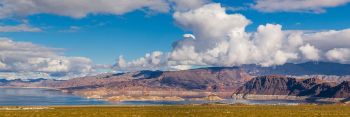Reservoirs: Difference between revisions
From ASDSO Dam Safety Toolbox
No edit summary |
No edit summary |
||
| Line 26: | Line 26: | ||
* [[Design and Construction of a Reservoir]] | * [[Design and Construction of a Reservoir]] | ||
* [[O&M of a Reservoir]] | * [[O&M of a Reservoir]] | ||
* [[ | * [[Decommissioning]] | ||
<!-- For information on notation for in text citations visit https://www.mediawiki.org/wiki/Help:Cite Or simply enclose the citation as shown <ref> citation </ref> in the location of the in text mention. Citations will automatically populate below--> | <!-- For information on notation for in text citations visit https://www.mediawiki.org/wiki/Help:Cite Or simply enclose the citation as shown <ref> citation </ref> in the location of the in text mention. Citations will automatically populate below--> | ||
Revision as of 06:11, 16 September 2022

|
| Lade Mead, a reservoir formed by the Hoover Dam on the Colorado River, is the largest reservoir in the United States by water capacity. (National Parks Service) |
Reservoirs are artificial bodies of water impounded behind a dam for one or more intended purposes including water storage, flood protection, hydropower generation, or recreation.
Components of a Reservoir
Life Cycle of a Reservoir
Citations:
Revision ID: 3402
Revision Date: 09/16/2022
